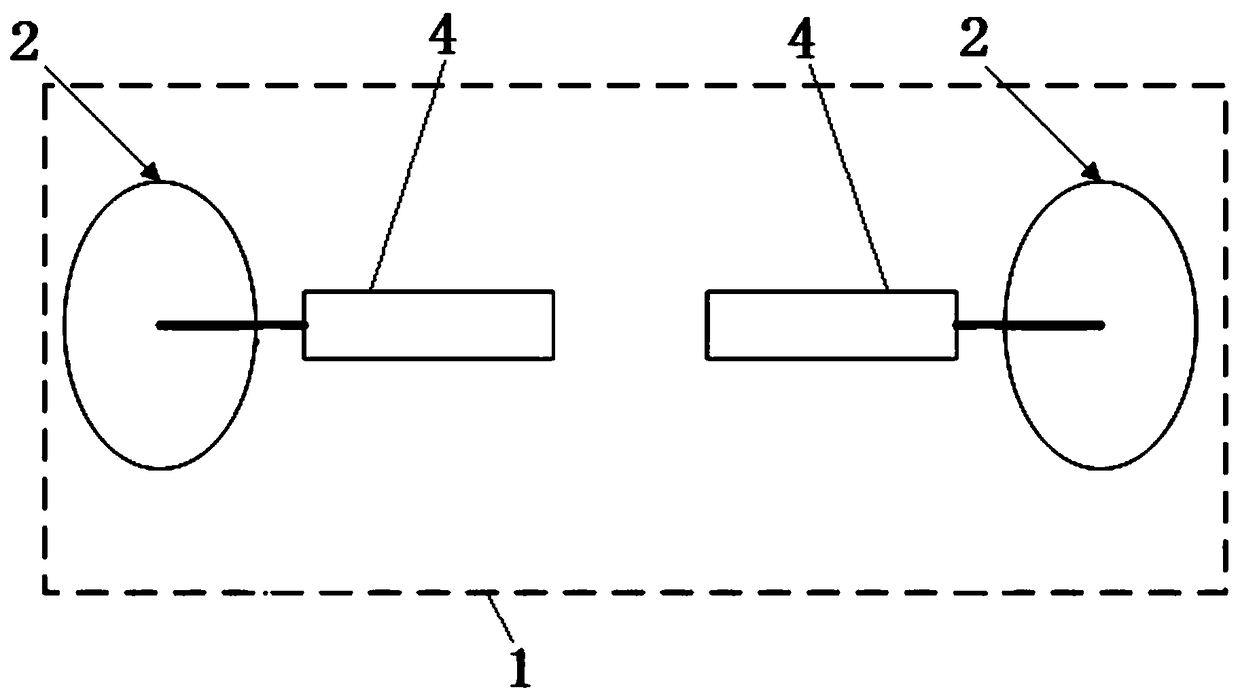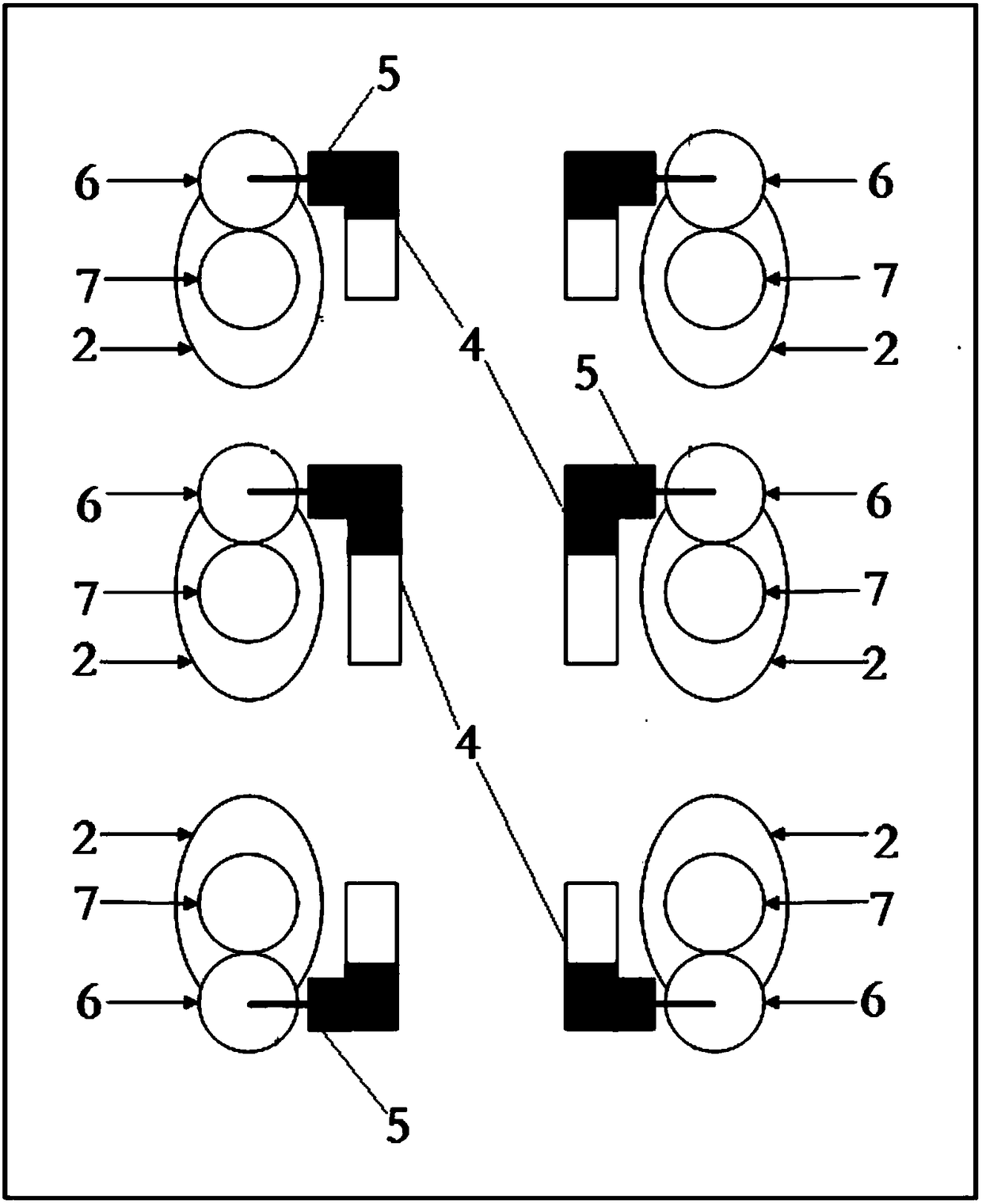[0007] (1) Due to the influence of the characteristics of the
DC motor itself, the volume and weight of the
DC motor are relatively large, which is not conducive to the improvement of the dynamic performance of the unmanned patrol car
[0009] (3) Due to the large length of the DC motor of the patrol car, the unmanned patrol car with a traditional mechanical structure has a large width and cannot pass through some narrow spaces
[0010] (4) The DC motors of existing unmanned patrol vehicles are directly mechanically connected to the driving wheels, and the speed regulation is completed by adjusting the
voltage of the DC motors through the controller. Although the requirements for walking speed are met, the driving of the entire unmanned patrol vehicle The torque of the car is small, and the ability to adapt to rough outdoor conditions is poor
[0011] (5) The existing unmanned patrol vehicles all use low-level single-
chip microcomputer chips, and the
operating frequency is low, only tens of megahertz, which cannot satisfy the control of unmanned patrol vehicles on various complex environmental disturbances, which is likely to cause unmanned driving. patrol car out of control
[0012] (6) Affected by the performance of the PC of the unmanned patrol car, the data collected by the environmental detection sensor of the unmanned patrol car cannot be quickly calculated and stored, which affects the judgment of the unmanned patrol car on the surrounding environment
[0013] (7) Affected by the performance of the PC of the unmanned patrol car, the
image acquisition data of the CCD sensor of the unmanned patrol car cannot be quickly analyzed and calculated in real time, and the
total station can only find problems in the patrol by analyzing the stored image data
[0018] (12) The
control system based on the single-
chip microcomputer cannot quickly complete the fast
servo adjustment of the two-axis DC motor, which increases the adjustment time of the attitude of the unmanned patrol car, and the unmanned patrol car cannot walk quickly
[0020] (14) The two-wheel drive unmanned patrol car has only two power points. Although it can better complete the patrol task on a flat indoor road, once it encounters a rough outdoor road, it will often slip a power wheel. , causing the unmanned patrol car to lose control
[0021] (15) The two-wheel drive unmanned patrol car generally meets the power requirements by overloading the motor when climbing a slope, but once it encounters complex conditions and needs to run for a long time, it will damage the performance of the motor and cause the entire unmanned patrol car system The reliability of the
[0022] (16) The unmanned patrol car needs to accelerate rapidly and run at a higher speed in many
emergency situations. Under such conditions, the power required by the system is relatively large, and the
motor power that meets normal driving cannot meet the long-term acceleration requirements of the system. As a result, the adaptability of the entire unmanned patrol car system is greatly reduced
[0023] (17) For a four-wheel-drive unmanned patrol car, there are only four contact points in the power contact area with the ground. Once a
drive wheel stalls, the system will change back to two-wheel drive, and the obstacle-crossing ability is weak , sometimes even unable to cross obstacles, and ultimately unable to complete the patrol mission
[0024] (18) For the unmanned patrol car with four-wheel power drive, the power adjustment ability of the
robot is improved compared with the two-wheel power drive, which can meet the acceleration of the unmanned patrol car under simple working conditions. When there is a patrol path with complex working conditions, the demand power changes greatly, which is likely to cause a significant decrease in the dynamic performance of the system
[0025] (19) For unmanned patrol cars with two-wheel drive and four-wheel drive, once they encounter wet patrol roads, the grip of the patrol car is relatively weak, and it is easy to slip when walking
[0026] (20) Existing unmanned patrol cars use forward navigation sensors to detect the environment. When encountering a dead end, they can only turn around by rotating 180 degrees on the spot. When encountering a narrow space, The unmanned patrol car will not be able to make a U-turn, resulting in the failure of the patrol mission
[0027] (21)
Lidar is very sensitive to rainy and foggy weather, and rain and
fog can absorb
Lidar very strongly. Therefore, in rainy and foggy weather, the performance of
Lidar will be greatly reduced, which will cause a greater
impact on the safety of unmanned patrol vehicles. influences
[0028] (22) The
lidar is very sensitive to the environment with smog, and the
smoke absorbs the
lidar very badly. Therefore, under the condition of smog, the performance of the
lidar will be greatly reduced, which will cause a greater
impact on the safety of the unmanned patrol car. influences
[0029] (23) The lidar is very sensitive to dusty environments, and dust absorbs the lidar very strongly. Therefore, under dusty conditions, the performance of the lidar will be greatly reduced, which will cause a greater
impact on the safety of the unmanned patrol car. influences
[0030] (24) The lidar is very sensitive to the weather with strong light. Sometimes the strong
sunlight can greatly reduce the performance of the lidar, and sometimes there is no
signal output, which has a great impact on the safety of the unmanned patrol car.
 Login to View More
Login to View More  Login to View More
Login to View More 


